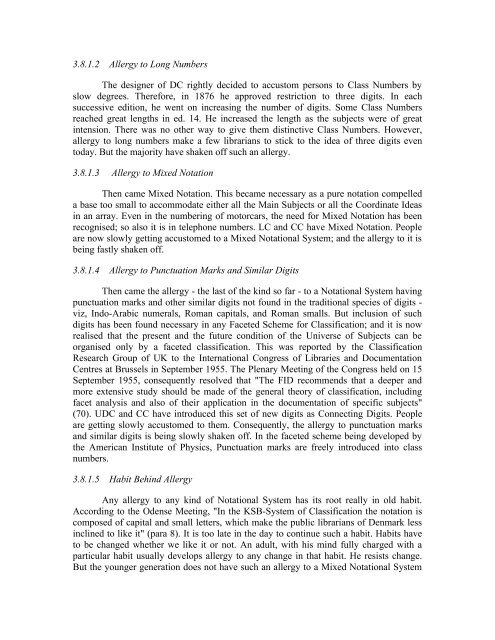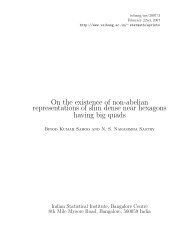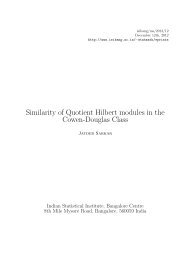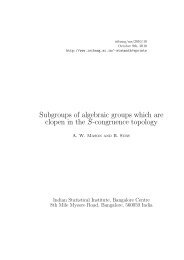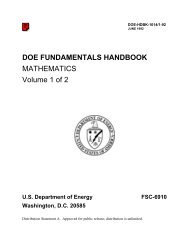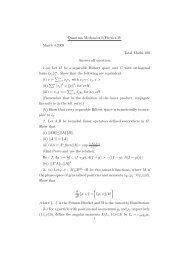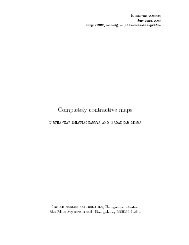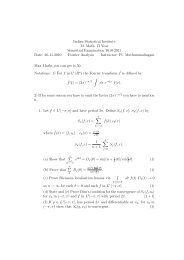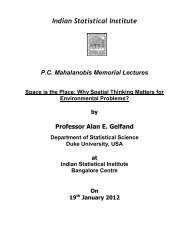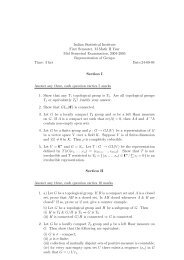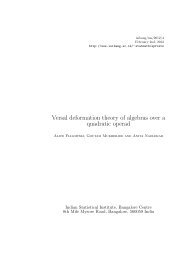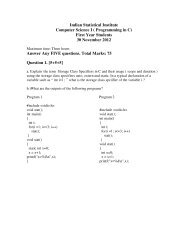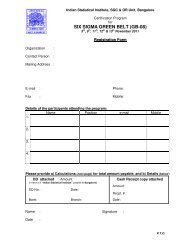CHOICE OF SCHEME FOR CLASSIFICATION - Indian Statistical ...
CHOICE OF SCHEME FOR CLASSIFICATION - Indian Statistical ...
CHOICE OF SCHEME FOR CLASSIFICATION - Indian Statistical ...
You also want an ePaper? Increase the reach of your titles
YUMPU automatically turns print PDFs into web optimized ePapers that Google loves.
3.8.1.2 Allergy to Long Numbers<br />
The designer of DC rightly decided to accustom persons to Class Numbers by<br />
slow degrees. Therefore, in 1876 he approved restriction to three digits. In each<br />
successive edition, he went on increasing the number of digits. Some Class Numbers<br />
reached great lengths in ed. 14. He increased the length as the subjects were of great<br />
intension. There was no other way to give them distinctive Class Numbers. However,<br />
allergy to long numbers make a few librarians to stick to the idea of three digits even<br />
today. But the majority have shaken off such an allergy.<br />
3.8.1.3 Allergy to Mixed Notation<br />
Then came Mixed Notation. This became necessary as a pure notation compelled<br />
a base too small to accommodate either all the Main Subjects or all the Coordinate Ideas<br />
in an array. Even in the numbering of motorcars, the need for Mixed Notation has been<br />
recognised; so also it is in telephone numbers. LC and CC have Mixed Notation. People<br />
are now slowly getting accustomed to a Mixed Notational System; and the allergy to it is<br />
being fastly shaken off.<br />
3.8.1.4 Allergy to Punctuation Marks and Similar Digits<br />
Then came the allergy - the last of the kind so far - to a Notational System having<br />
punctuation marks and other similar digits not found in the traditional species of digits -<br />
viz, Indo-Arabic numerals, Roman capitals, and Roman smalls. But inclusion of such<br />
digits has been found necessary in any Faceted Scheme for Classification; and it is now<br />
realised that the present and the future condition of the Universe of Subjects can be<br />
organised only by a faceted classification. This was reported by the Classification<br />
Research Group of UK to the International Congress of Libraries and Documentation<br />
Centres at Brussels in September 1955. The Plenary Meeting of the Congress held on 15<br />
September 1955, consequently resolved that "The FID recommends that a deeper and<br />
more extensive study should be made of the general theory of classification, including<br />
facet analysis and also of their application in the documentation of specific subjects"<br />
(70). UDC and CC have introduced this set of new digits as Connecting Digits. People<br />
are getting slowly accustomed to them. Consequently, the allergy to punctuation marks<br />
and similar digits is being slowly shaken off. In the faceted scheme being developed by<br />
the American Institute of Physics, Punctuation marks are freely introduced into class<br />
numbers.<br />
3.8.1.5 Habit Behind Allergy<br />
Any allergy to any kind of Notational System has its root really in old habit.<br />
According to the Odense Meeting, "In the KSB-System of Classification the notation is<br />
composed of capital and small letters, which make the public librarians of Denmark less<br />
inclined to like it" (para 8). It is too late in the day to continue such a habit. Habits have<br />
to be changed whether we like it or not. An adult, with his mind fully charged with a<br />
particular habit usually develops allergy to any change in that habit. He resists change.<br />
But the younger generation does not have such an allergy to a Mixed Notational System


